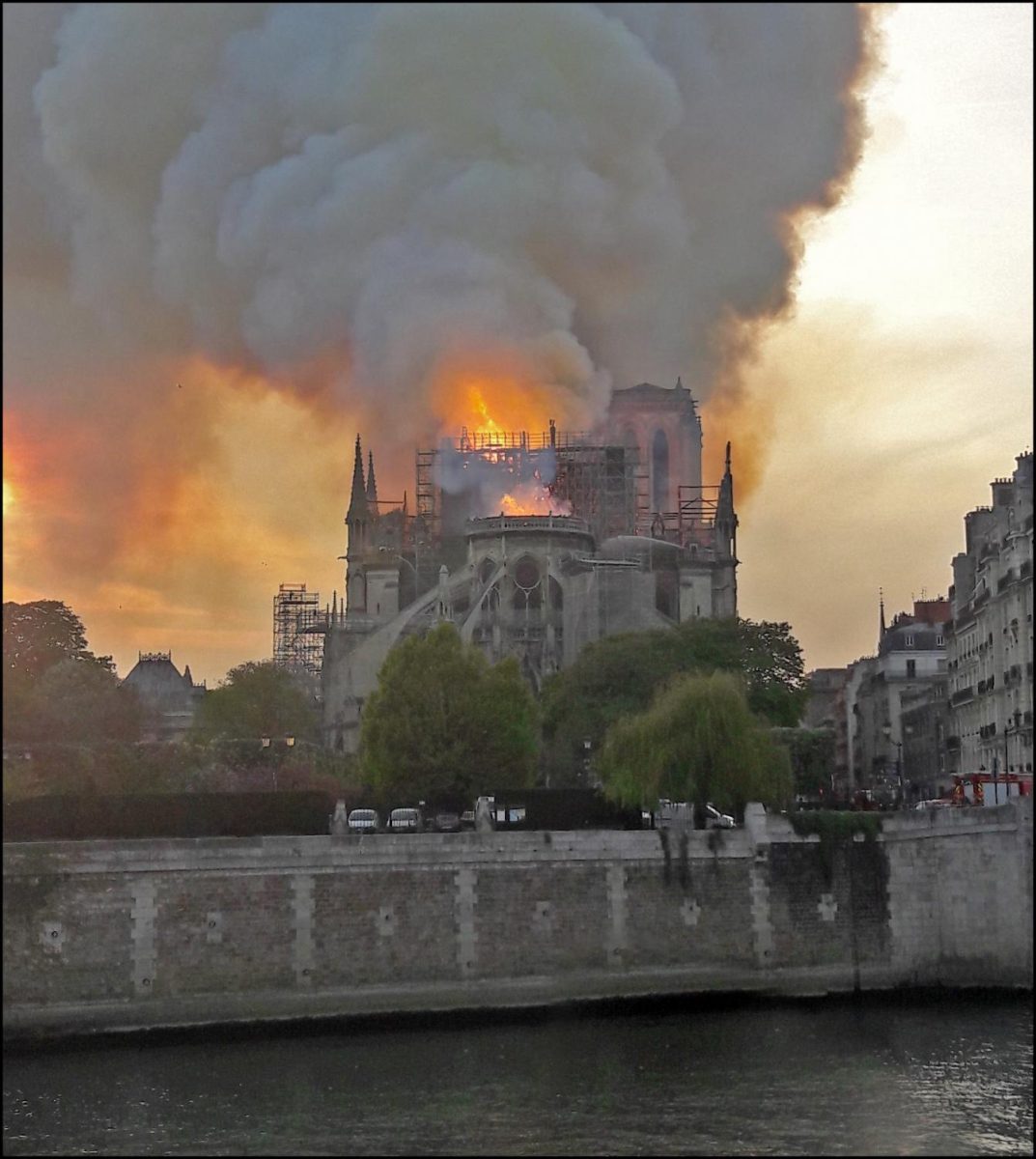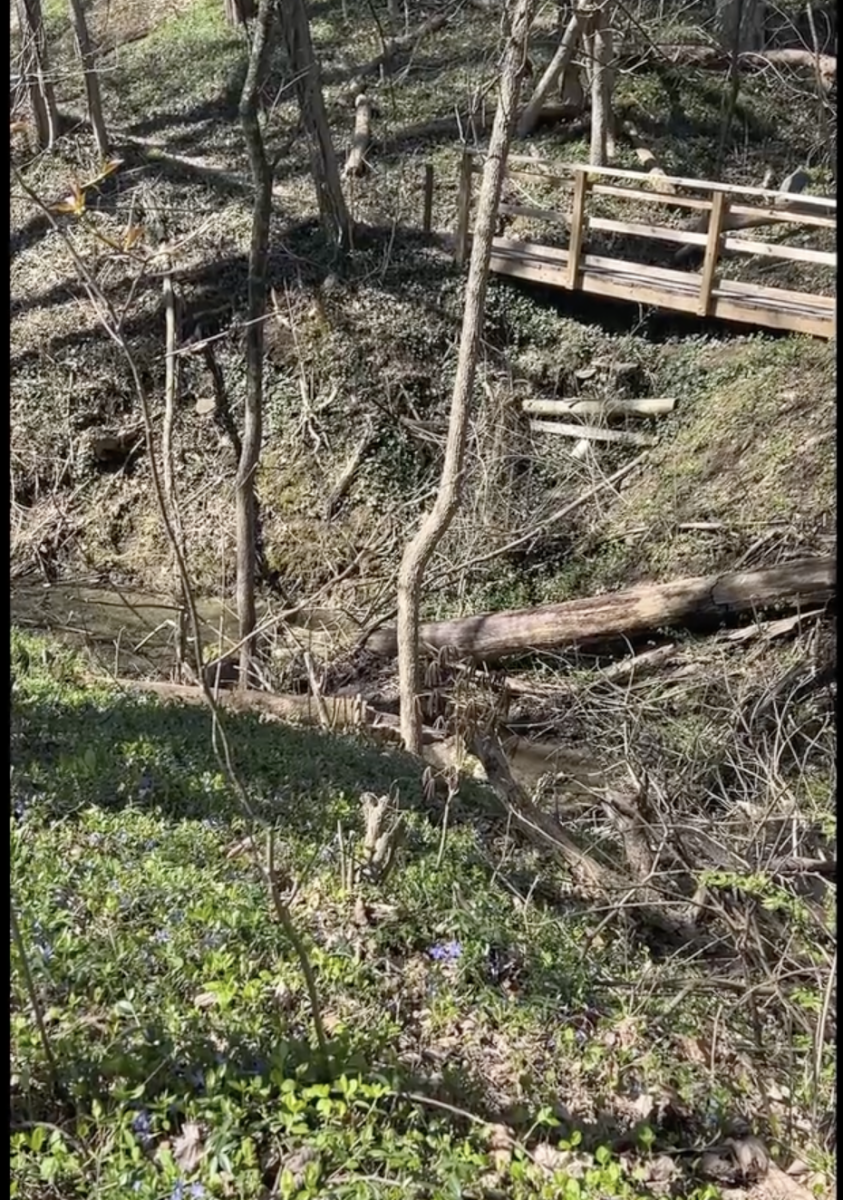In the middle of a meeting with other Miami faculty on Monday, Chairman of the French and Italian Department Jonathan Strauss stepped out to take a call from his wife. She’d heard news from her sisters, who lived in Paris: Notre Dame Cathedral was on fire.
On the television, live images of flames rose from the roof of the cathedral. “It felt like seeing a person die,” Strauss said.
He read updates on the event, watched and listened to commentators weigh in on the issue and offer their insights, but it still didn’t feel right. “They all seemed to miss something fundamental about how much it hurt,” Strauss said.
“I realized I wanted someone to say something. I felt like we were all waiting for someone to say, ‘You have a right to feel touched by this. It’s yours too.’ That person could have been anyone—but it had to be someone. And since it seemed no one else was doing it, I thought, ‘Okay, I’ll do it.’”
On Tuesday morning, Strauss sent an email to all students in the French Department. He said the devastation of such a sacred landmark affects us and calls us to action.
Part of the email read as follows:
“We will be the generation that saw this fire. All of us. Because Notre Dame is not just important to France. It is important to humanity.”
The tremendous fire consumed two-thirds of Notre Dame’s roof and the lead-coated wooden spire on Monday, April 15. The fire began at 6:43 p.m. Paris time and raged for more than 12 hours as about 400 firefighters battled the inferno. The external stone walls of the cathedral were spared, but experts say it will take billions of dollars to rebuild the rest of the cathedral and anywhere from five to fifteen years to fully complete renovations and reconstruction.
The Fire was Felt in Oxford
The cause of the fire is under intense investigation by French authorities, who are so far treating it as an accident, likely related to renovations that were being done to the building, rather than an act of arson or terrorism. Paris prosecutor Remy Heitz promised a “long and complex” investigation into the origin of the fire.
But for many, even those as far from the scene as Oxford, the damage felt personal.
“I feel a part of me burned up today too,” Dawn-Marie Young, a Miami alumna, said. Young participated in the Miami University Dolibois European Center (MUDEC) Program in Luxembourg in the fall of 1985. “It isn’t the same at all as 9/11, but it’s nearly as incomprehensible to watch such a magnificent structure being destroyed.”
Every year, around 13 million people visit the cathedral, making it the most visited monument in France. Within the Miami and Oxford community, many people have visited the iconic structure, both on personal trips and through study-abroad options offered at Miami. More than 30 Oxford residents commented on a post the Observer put up on Facebook, reminicing about their experiences visiting Notre Dame once, if not several times, over the last 50 years.
Iris Hall, a retired worker for Schneider Electric, who’s lived in Oxford all of her life, saw Notre Dame in 1989, but never had a chance to go back.
“The art, carvings, paintings and statues were more beautiful than anything I had ever seen,” Hall said. “Suffice it to say, if I had not already believed there was a higher entity, I would have by the time I left that magnificent place.”
Hall was just as dismayed as the rest of the world to hear about the burning.
“When I first heard of the fire, my first thought was, ‘How sad, it can NEVER be truly replaced.’”
Hall said she thinks the devastation of the fire has affected so many because we never realized what we had until it was gone.
“So many people who had the opportunity to see it also realized that it can never be truly replaced…depriving future generations of its beauty and grace. Kinda like a species that’s gone extinct.”
Miami alumna Carli Williams was lucky enough to see the cathedral most recently just six months ago, but she will never forget the very first time she saw the legendary monument.
“When you finally see Notre Dame in person, it’s just stunning. It’s completely awe-inspiring, this huge, massive building, with these details that are just incredible and make you think about all of the people who came together to make this amazing building,” Williams said. “Not even people in one time period, but people over different periods of time that came together through their faith and through art and through culture to create something that was so much bigger than themselves.”
Williams studied in Luxembourg in the spring of 2013, and in 2015 she became the coordinator of communications and student engagement at MUDEC. Every semester, she took students on a weekend trip to Paris and would make time to visit the beautiful cathedral. Now, after watching the cathedral burn, Williams mourns with the rest of the world.
“It seemed like something that’s lasted this long and has been through so much could never come down,” Williams said, “and I think that fact made it so shocking. When you see that this is the house of worship for so many people, that every day hundreds of people from around the world would walk in and just feel the grace and beauty present in this building, to see it go up in flames makes you realize that unfortunately, everything comes to an end.”
Thierry Leterre, dean of students at MUDEC, was born and raised in a French village not far from Paris. Growing up so close to the city, Notre Dame meant a lot to him.
“My hometown had posted this sign, ‘12 km from Notre Dame’ — as if Notre Dame, not Paris, was the place worth mentioning, as if it was the center of the world. Right from the get-go, Notre Dame was a landmark to me.”
In the square right in front of Notre Dame, a brass medallion is embedded in the ground, reading “Kilometer Zero.” In France, towns like Leterre’s measure their distances from kilometer zero because Notre Dame rests at the heart of Paris.
“As a student, I lived in the dormitory of my school, a mile away from the cathedral,” Leterre said. “I have seen so many summer sunsets there… as a young academic working in Paris, I often caught my train at a further station just to see my old cathedral, nested in the meanders of the river.”
Leterre was shocked to hear about the fire, but he believes that his city and his people will persevere.
“I hope that ‘Paris sera toujours Paris’ (Paris will always be Paris), as the old song goes: a city that makes people dream around the world. Notre Dame is part of this dream, as it is part of Paris’ reality.”
A Site that Belongs to the World
The reality of the fire has affected citizens all over the world, far beyond the borders of France. Strauss, who studied in Paris to receive his master’s degree in French, believes that part of what connects people to Notre Dame is that so many believed the cathedral would last forever, only for that belief to go up in flames.
“[Notre Dame] stays, and we don’t. It persists… it stays, and by staying it’s a place you go back to. People come and go but it stays… it creates community because we are not alone, in having this feeling.”
The cathedral was built over 800 years ago, between 1163 and 1345. It has undergone several renovations since then, including the addition of the wooden spire in the 1800s by architect Eugene Viollet-le-Duc. Throughout its long history, the cultural meaning of Notre Dame has shifted and adjusted with the times, gradually becoming a symbol of architectural, historical and religious value.
“The gothic style was also one of the first international styles, and the cathedral is a jewel of gothic architecture,” Strauss said. “It has always reached out beyond France. It has always called to humanity. To all religions. To those who do not believe. To all nations and cultures.”
For Williams, while the destruction of the physical monument is devastating, the symbol that Notre Dame stands for will be persevered long after the cathedral is gone.
“This building is a representation; it is a symbol for something much bigger than the building itself, something that will outlast the building itself, something that will outlast the church,” Williams said, “and that can be contained not only in the building but in the hearts of people.”
In Strauss’s mind, we will all carry a piece of Notre Dame with us.
“If its burning has affected you, even if it has only left you sad or incredulous, that means Notre Dame is important to you. It belongs to you. It is part of who you are… You can help rebuild the cathedral in your way. I don’t know what that is, but you can start just by reading something in French.”






